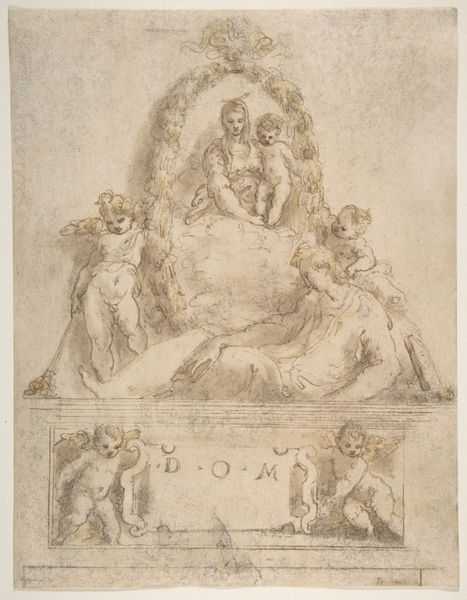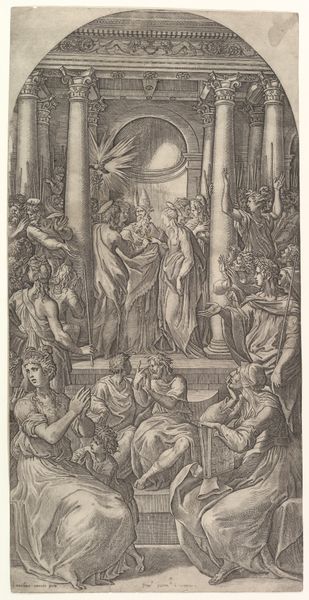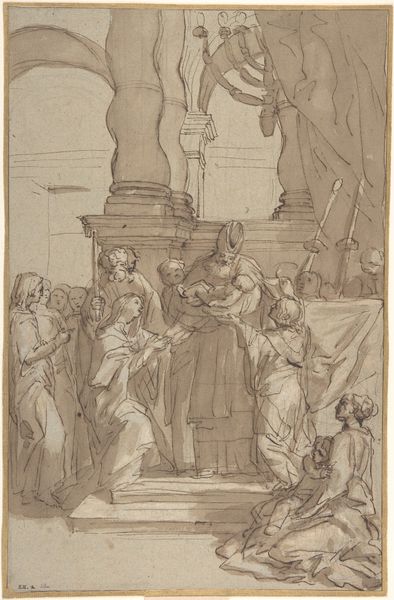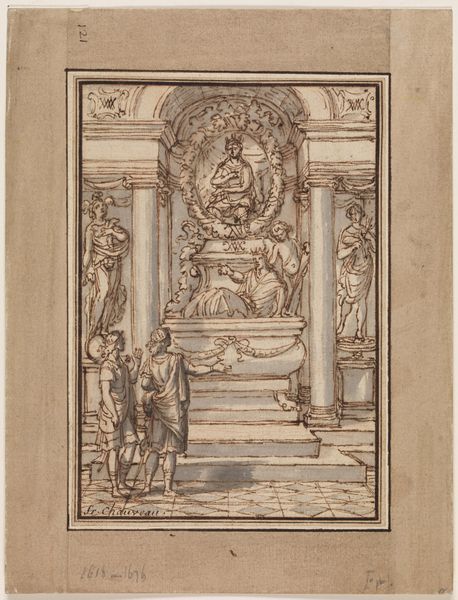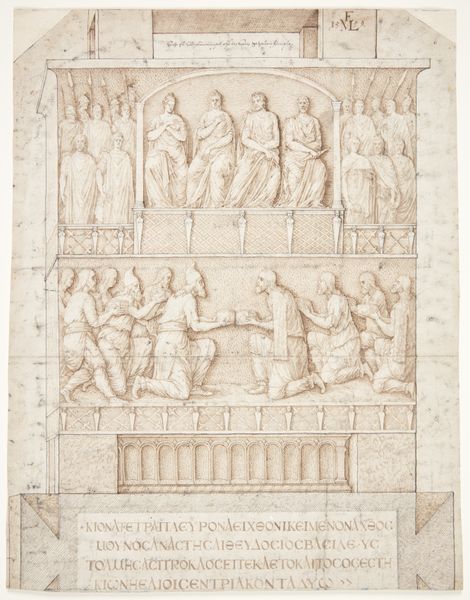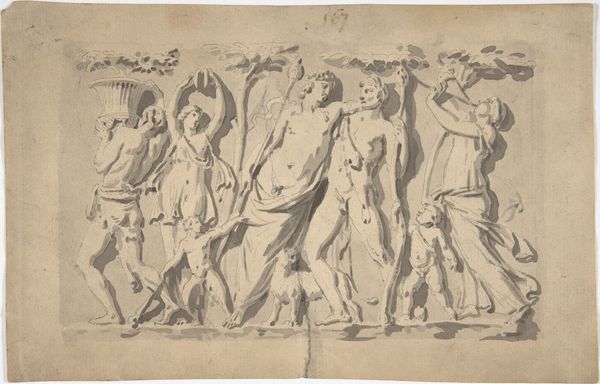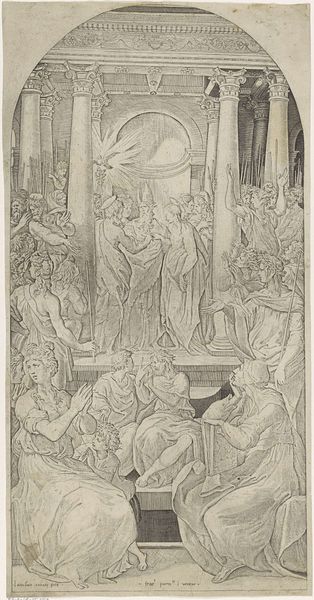
drawing, etching
#
portrait
#
drawing
#
etching
#
classical-realism
#
etching
#
figuration
#
classicism
#
history-painting
#
academic-art
#
italian-renaissance
Dimensions: 434 mm (height) x 335 mm (width) (bladmaal)
Melchior Lorck created this drawing of a sculpted pedestal in the 16th century. It exemplifies the Renaissance revival of classical forms, but also raises questions about power and representation. Lorck was a Danish artist working at a time when Northern Europe was absorbing the influence of Italian Renaissance art. Here, the classical column and the sculpted relief reflect the fashion for ancient Greek and Roman designs. However, the relief also suggests how art was used to convey authority. The figures resemble Roman senators and the central portrait could be a ruler or emperor, implying the divine right to rule. Lorck, who travelled extensively, would have been keenly aware of the political uses of art, particularly in an age of religious conflict. As historians, we can research the symbolism used here and the specific political contexts in which Lorck worked. The drawing, therefore, becomes more than just an architectural study; it's a window into the social and political world of 16th-century Europe and the institutions of power.
Comments
No comments
Be the first to comment and join the conversation on the ultimate creative platform.



